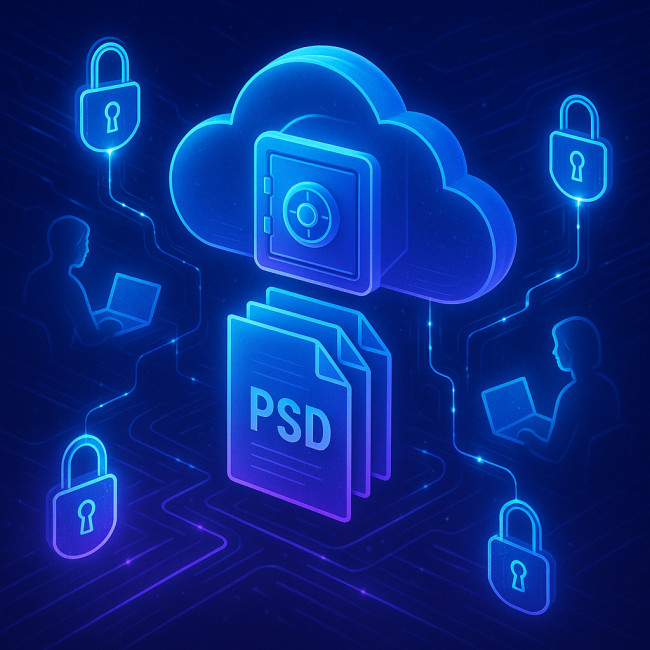How digital artists price remote collaborations without underselling rights
Quoting for a remote illustration, concept art, or animation gig is already tricky. Add intellectual-property clauses, and many digital artists either over-charge and lose the brief or under-charge and lose long-term revenue. This guide gives you a clear, repeatable method to set fair rates, protect your rights, and win remote collaborations with confidence.
Why usage rights drive more revenue than hours worked

Clients rarely pay only for the time it takes you to design. They pay for the economic value your art brings once it lives on apps, billboards or merchandising. A short social-media campaign might add €500 to your fee, while a global, multi-year license can multiply it by ten. When you understand that equation, you can stop pricing by instinct and start pricing by usage.
Four variables that shape your licensing quote
1. Usage scope
Define where the files will appear: internal presentations, organic social media, paid ads, print, packaging, NFTs, etc. Each extra medium expands the client's reach and justifies a higher fee.
2. Territory
A France-only license costs less than a worldwide one. If the client insists on “global,” offer a shorter term or a staggered roll-out to keep the upfront price realistic.
3. Duration
Most professional agreements run 12–36 months. Unlimited or perpetual rights should trigger at least a 200 % surcharge because you relinquish future earning potential.
4. Exclusivity
Non-exclusive rights let you resell or repurpose the artwork. Exclusive rights remove that option, so add 50 – 150 % depending on how niche the piece is.
Benchmark fee tiers for common digital-art deliverables
| Rights package | Typical multiplier on day rate | What the client gets |
|---|---|---|
| Internal only, 12 months, non-exclusive | 1× | Team decks, prototypes, no public release |
| Social media organic, EU, 12 months | 1.5× | Posts, stories, newsletters |
| Paid ads, North America, 24 months | 3× | Display ads, banners, video pre-roll |
| Global packaging & merchandising, 36 months | 6× | Retail boxes, apparel prints |
| Perpetual, worldwide, all media, exclusive | 10×+ | Full transfer of economic rights |
Data snapshot: how scope inflates illustration fees
Seven-step quoting workflow that protects your IP
- Clarify the brief in writing. Ask for deliverables, timeline, media, territory and term. Use a template like the one in our collaboration contracts guide.
- Estimate production time. Calculate sketch, revisions, final polish, project management, and buffer.
- Set your base day or project rate. Benchmark against your skill level and industry averages (e.g. €350 – €600 per day for mid-level concept artists).
- Add rights multipliers. Use the table above. If the client needs multiple scopes, stack multipliers logically, never blindly.
- Offer tiered options. Present at least two packages: a cost-effective limited license and a premium buy-out. Clients appreciate choice.
- Detail revision limits & rush fees. Protect your calendar and avoid scope creep.
- Issue a written agreement. E-sign tools such as SignWell speed approval, even across time zones.
Negotiation tips that keep value high
- Anchor on economic impact. Discuss how the artwork raises brand visibility or conversion.
- Separate rights from production. If the client balks at your total, reduce scope or duration, not your creative day rate.
- Use phased upgrades. Offer the option to extend the license later at a pre-agreed fee. You keep leverage, they keep flexibility.
- Refuse unclear clauses. Phrases like “all media now known or hereafter devised” without duration spell trouble.
- Reference industry standards. Point to the Graphic Artists Guild Handbook or the AOI Pricing Calculator—it sounds professional, not defensive.
Legal safeguards for remote files

Send layered PSDs or source files only after final payment clears. Store them in an encrypted cloud folder. Our digital portfolio checklist shows how to keep previews lightweight while the master files stay secure in a remote collaboration vault.
Need to manage complex asset libraries? Check the workflow in our rights-negotiation deep-dive, which covers joint-ownership pitfalls.
Quiz: Test your pricing intuition
FAQ
- Is pricing per hour ever acceptable?
- Hourly billing works for open-ended consulting, but for deliverables with defined usage, a project fee plus rights multiplier is clearer for both sides.
- How do I handle unlimited-revision requests?
- Cap free revisions to two rounds. Additional changes trigger a fresh line item or revert to your day rate.
- Can I reuse elements from a commissioned piece in my personal work?
- Only if the agreement grants you non-exclusive rights. Otherwise, you need written client consent.
- What if a client refuses to pay for extended usage after the initial term?
- Their license expires. Politely remind them and negotiate renewal; otherwise issue a takedown notice if infringement continues.
- Should I charge more for AI-ready layered files?
- Yes. Editable layers and prompt libraries accelerate a client's future projects, so price them as an additional deliverable.
Key takeaway
Remote collaborations thrive on clarity. Nail the brief, attach fair yet firm licensing fees, and you will get hired for your talent and respected for your business acumen.
Ready to quote your next project? Adapt the workflow above, then bookmark this guide for quick reference before every proposal.











